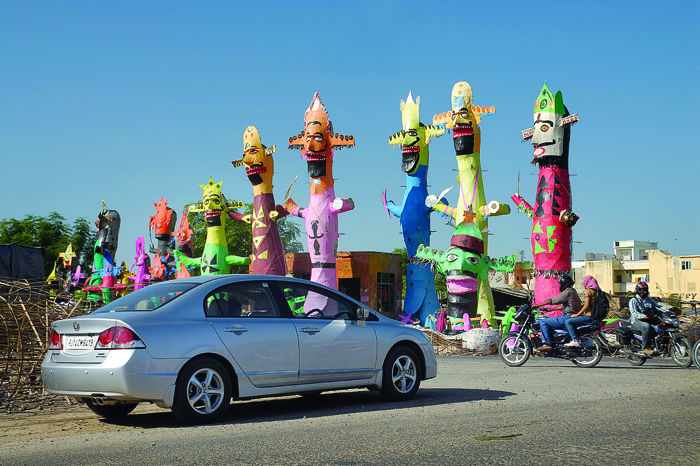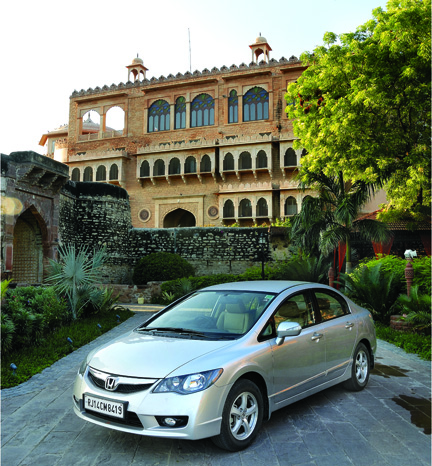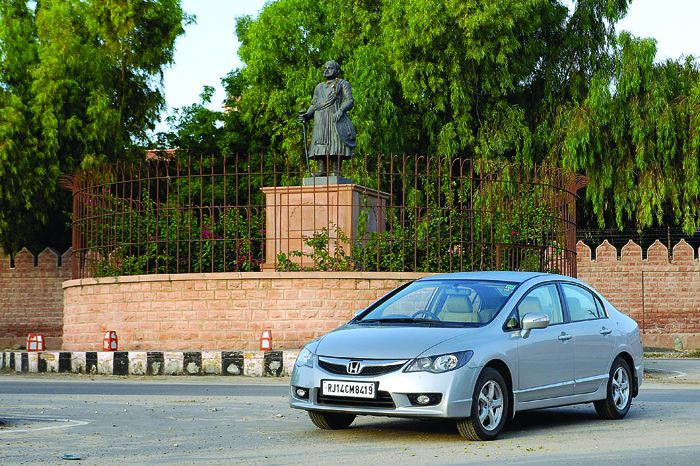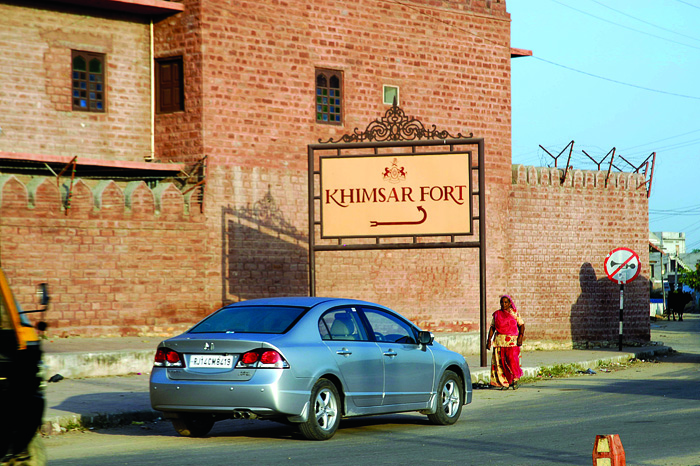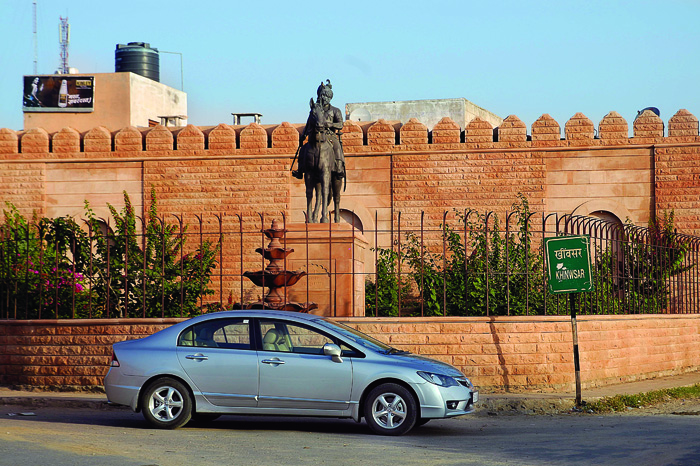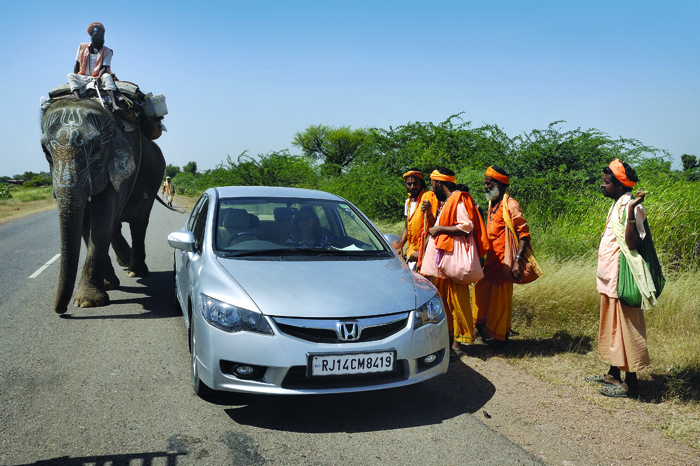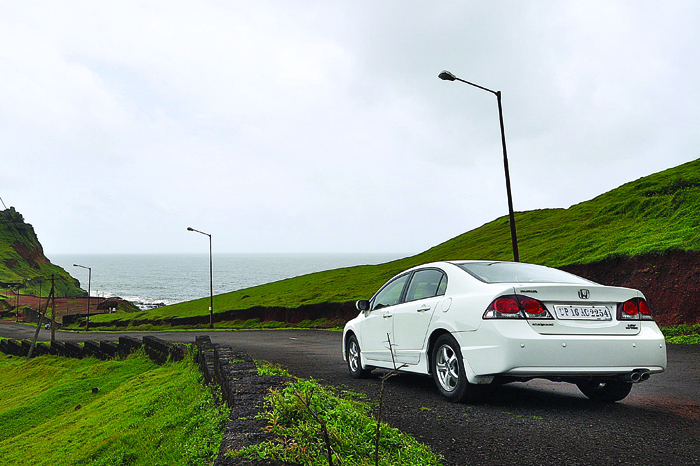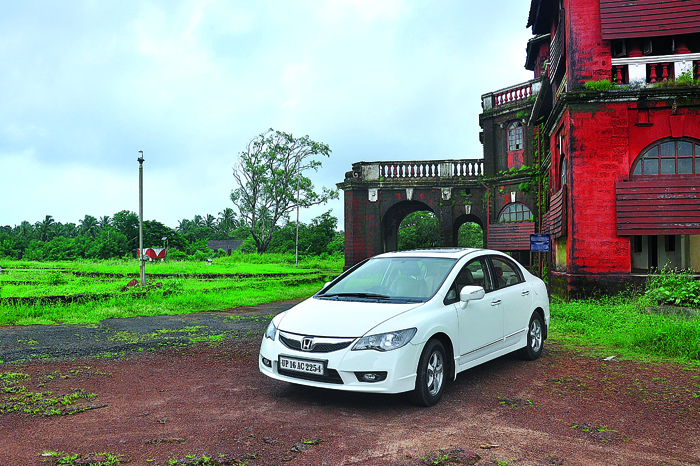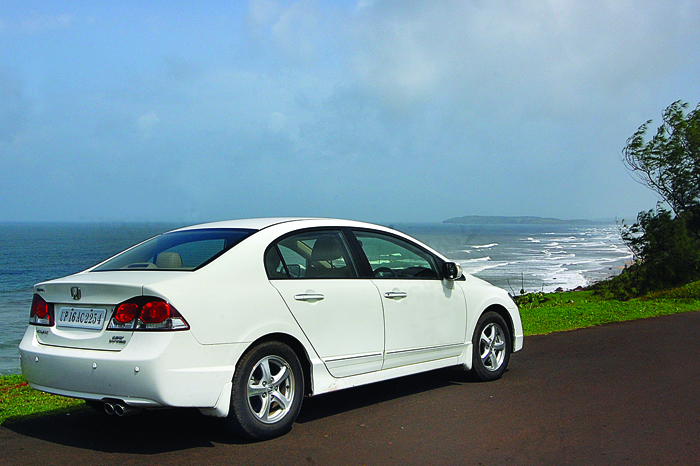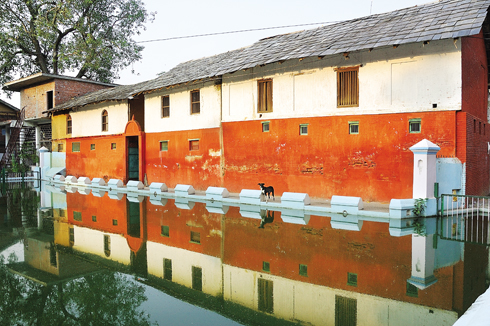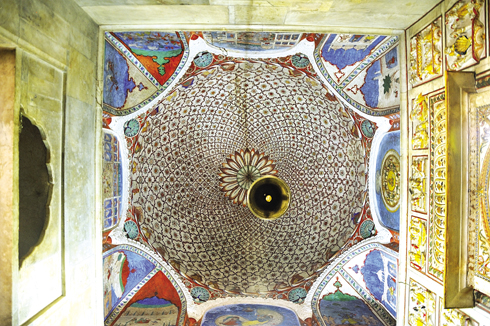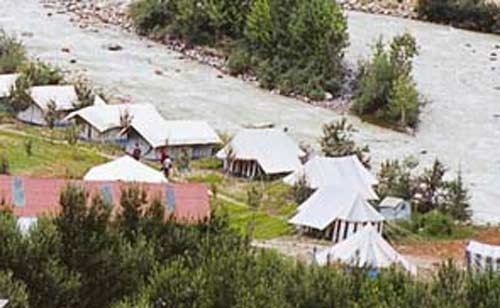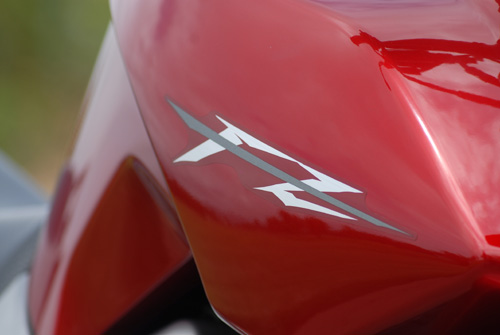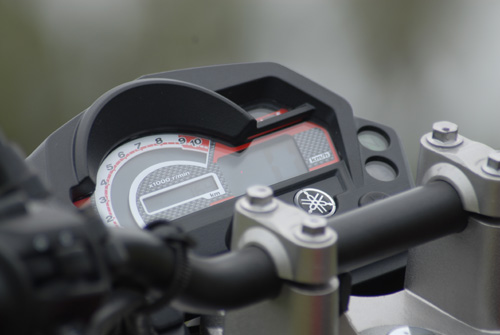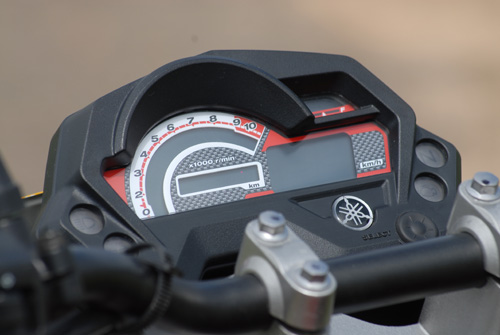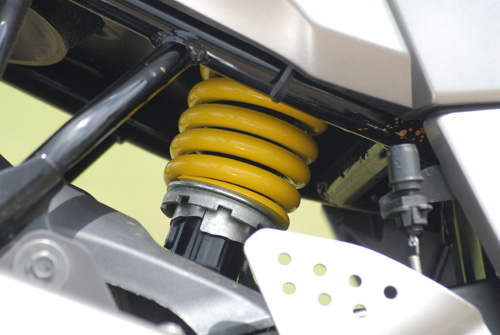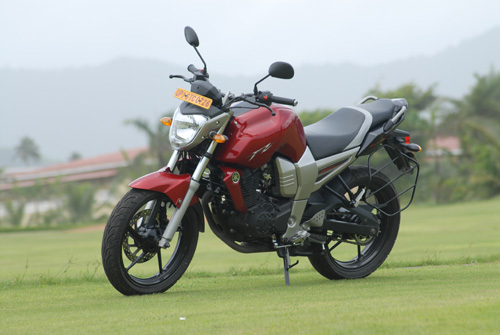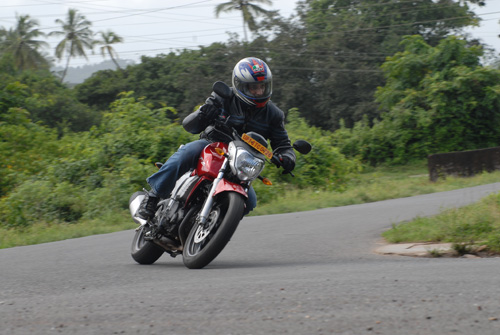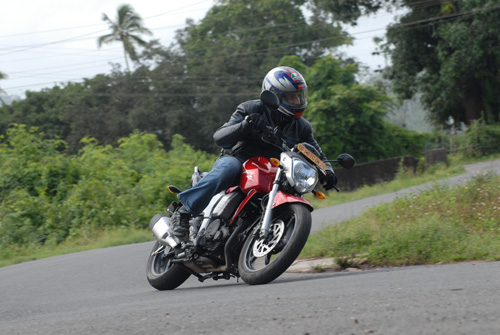The day we arrived, there was a film shoot underway for a Bollywood film called ‘Chaar Din Ki Chandni’ with Tusshar Kapoor and Anupam Kher at the Khimsar Fort. As we happened to learn, the story of the film revolved around four days at an Indian wedding. Indian weddings, as we all know, are grand and highly traditional affairs. Grand, traditional, festive, celebrations – these words just about encapsulate the Khimsar experience.
If you are driving up from Jaipur, take the NH8 towards Ajmer. The road is a six-laner and you can easily make up time here. There are plenty of places to stop at along the way for a quick bite or to simply stretch your legs. Once you turn off NH8 to NH89 before Ajmer, the road narrows down to a two-laner and you will not have much choice of food and drink apart from a few places around Pushkar. Once you reach Nagaur, you have to take NH65 towards Jodhpur, which will take you to Khimsar. This last 40km stretch is a fantastic driving road with long straights and open fields on both sides. At places, Khimsar is spelt as ‘Khinswar’, so don’t get confused.
Khimsar is a small hamlet on the border of the Thar desert, with the Khimsar Fort at its centre. The fort is your hotel, restaurant and tourist attraction. Along with the surrounding desert, it is about all there is to this place. Yes, you can go out and experience the sand dunes or make a trip to a nearby village, but not much else. Which, if you really think about it, is not a bad thing at all.
Many vacations are spent ticking off tourist points in our itineraries. Here, all you can do is sit back, relax, enjoy the solitude and spend some quality time with your loved ones. As night falls, lie back and watch the sky light up with a million stars like your city eyes have never seen. And enjoy the stark beauty of the Thar desert.
The construction of Khimsar Fort was begun in 1523 by Rao Karamsiji, the eighth son of the founder of Jodhpur, Rao Jodha. Rao Karamsiji chose the spot of Khimsar for himself, 90km from Jodhpur, where one brother resided, and 150km away from Bikaner, the kingdom of another brother. His 19th descendant, Kunwar Gajendra Singh still lives here. While his family occupies a part of this fort, the rest has been converted into a hotel, now known as the WelcomHeritage Khimsar Fort. The staff members too are the descendants of the royal courtiers who have served the royal family for generations. So you can think of it as entering a time warp, but with modern plumbing and conveniences. The hotel was awarded the ‘Grand Heritage Award for Excellence’ by the Ministry of Tourism a few years ago.
You enter WelcomHeritage Khimsar Fort through an imposing gate emblazoned with the family coat of arms and two old cannons to welcome you. Past the bougainvillea-lined driveway is the parking lot backed by a garage with huge show-windows. As Autocar India readers, this is one thing that will surely catch your fancy. Inside is a row of immaculately restored vintage cars. And, we were told, they are all in perfect running condition.
Staying in the WelcomHeritage Khimsar Fort is reliving the graceful days of Indian royalty. For most visitors, the highlight of their stay is dinner at the ancient ruins of Fateh Mahal with dancers, singers and musicians to entertain you as you tuck into your food. For breakfast, there is no better place than the domed terrace that was once the observation point of the fort. You can spend hours here lingering over the delectable food and the view.
Alternatively, you can just kick up your heels and lounge around in the swimming pool. If that is too strenous for you, let yourself be pampered at the spa. Or just catch a movie in the theatre room. You could also go shopping!
Within the fort premises is a shop called Nila Moti which sells exquisitely crafted handicrafts from the area. It was started by a Swiss couple, Monica and Michel Matter, who met in Afghanistan, got married in India in 1975, and wanted to do something useful. In 1992 they set up the Nila Moti Foundation, a crafts centre that employs and empowers local women. The handicrafts they produce have a loyal clientele in Switzerland. So now you can save your Swiss francs and instead pay for the handicrafts in rupees. If you wish, take some time out and visit the centre – you can meet the women and watch them crafting out these exquisite pieces for the international market.
Forts are fine. But what if you want to experience the beauty of living in a village in the desert, but without having to give up the creature comforts of modern life? Then head for the Dune Village.
A camel cart will take you from the fort to the village. As you crest over a sand dune, an enchanting view greets you. This part is called the WelcomHeritage Khimsar Sand Dunes.
Circular, thatched huts with clay-plaster walls dot a large, bowl-like area with a blue-green pond filled with preening geese and ducks. Sitting here, encircled by rising dunes of golden sand, it’s not strange to feel that you are part of an Arabian fantasy and the princess will come flying by any time on her magic carpet.
But you can’t come to the desert and not experience the desert. The Great Indian Desert is spread over 4,46,000 square kilometres. Thar is still largely off the tourist map. Contrary to popular perception, Thar is not all undulating dunes of barren sand but a land covered in thorn trees and tough scrub. And it holds not just camels, but an astonishing variety of wildlife. If you see a curious herringbone track on the sand, it is made by the spiny-tailed lizard that is reputedly capable of unfertilised reproduction. The burrows in the sand may be home to desert rats or one of the many varieties of snakes that call the desert their home. Among the snakes is the poisonous desert viper, whose bite can be fatal if not attended to immediately. But don’t worry; most snakes emerge only at night when the temperature is lower.
The wildlife that is most visible are the blackbucks, chinkara and the nilgai. The hotel will organise a safari for you if you wish to see these graceful animals in their natural habitat.
If you feel a driving holiday is incomplete without some more driving, head for Nagaur Fort, which is about 40km from Khimsar. Originally a mud fort built in the fourth century, it was re-built in stone by Mohammed Bahlim, governor of the Ghaznivites, in the early 12th century, over the mound of the ancient mud fort. Over the centuries it has been held by the early Chauhans, Chalukayas, the great Prithviraj Chauhan, Ghazni, Ghori, Iltutmish, Balban, Allauddin Khilji, Sher Shah Suri and finally, the Mughals. From the great Emperor Akbar’s time up to the end of Mughal rule in India, Nagaur alternated between the Rathores of Jodhpur and Bikaner and the Mughals. The fort was in a state of disrepair and crumbling. But extensive restoration work has brought back some of its former glory and even earned it a UNESCO international award for restoration.
On the other hand, if you drive 62km from Khimsar, you will come to the Hindu and Jain temples at Osian, built between the eighth and 12th centuries. The oldest of the Osian temples is the Sun Temple, the doorway of which is regarded as one of the finest in India. All the temples, with their beautifully decorated walls, face west. Though small in size, all the Osian temples have been richly sculpted. Another striking feature of the temples is that no two temples are alike – every temple has its own unique design. Worth a mention are the Vishnu Temples III, IV and V. Don’t miss them.
While Rajasthan is full of more well-known and celebrated destinations, Khimsar stands apart, off the beaten track, an oasis in the desert. And there lies its charm.

